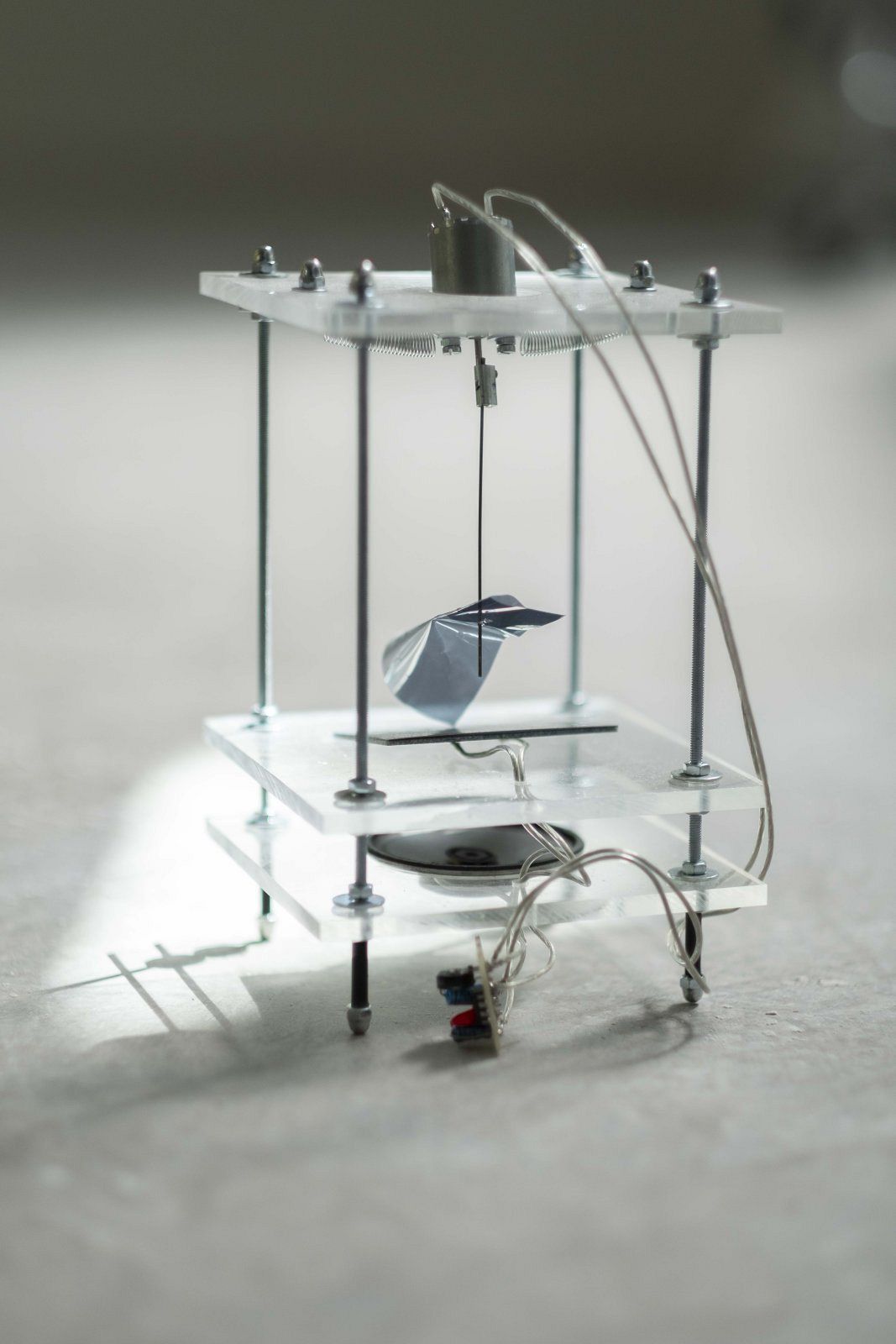
“Loop" is a kinetic installation comprised of three interconnected mechanic systems. Together, unit 1,2 and 3 engage in an electro-mechanical feedback loop where light, movement and sound become the main composers of the show. Besides continuously reshaping the conditions for their own movement, each of the three units repeatedly affects the behaviour of the next. Three simple systems and random factor enter an odd symbiosis where the future development of events becomes increasingly difficult to follow.
This installation is the outcome of an artistic research investigating the effects of perceived motion on temporal judgements and the general subjective experience of time within spatial contexts. Different categories of movements have been scrutinised such as emerging synchronisations, chaos and simple repetitions. All became part of the complex system simulation: “loop”.
recurring phenomena, motion dynamics and perception of time
Thesis
Abstract
This thesis follows the effects of perceived movement and stimuli repetition on the subjective experience of time by reviewing relevant literature and conducting microexperiments. The subject of human time perception is treated as a nonlinear phenomenon and examined through the analytic and comparative using dynamics of biological and electromechanical systems. The perception that interests this writing is both; short term duration judgements and the general perception of longer time-scales. This is explored by conducting simple motor-driven motion experiments with dc motors and various sensors that together exhibit partial feedback loops. The conclusions offered thereby are paired with theories and models developed in the field of neuroscience, cognitive psychology, physics and the history of time. The goal is to broaden the understanding of the effects of the spatial kinetic installations built by the artist. Through the research it was found that stimuli repetition and fragmentation is inherently part of the human internal time keeping mechanisms. Furthermore, the anticipation of- and the synchronisation between repetitions in motion is essential regarding duration judgements and the dynamics of systems inside and outside the body. “Change” was identified as the bridging factor between the experience of time and the complex development of motion dynamics in partial feedback loops. Perceived motion and its velocity was found to be responsible for both: duration estimation and perceptual temporal distortion. Further, the study has revealed that the subjective experience and the physical description of time are both human constructs and are, by default, illusions. Finally a new hypothesis is introduced which asks wether the observation of complex nonlinear dynamics in small systems might be the only way to comprehend time as it is, “time” as a subjective phenomenon of the universe.